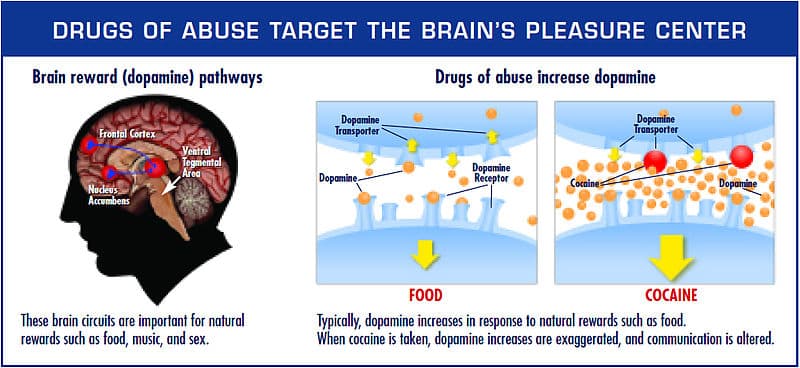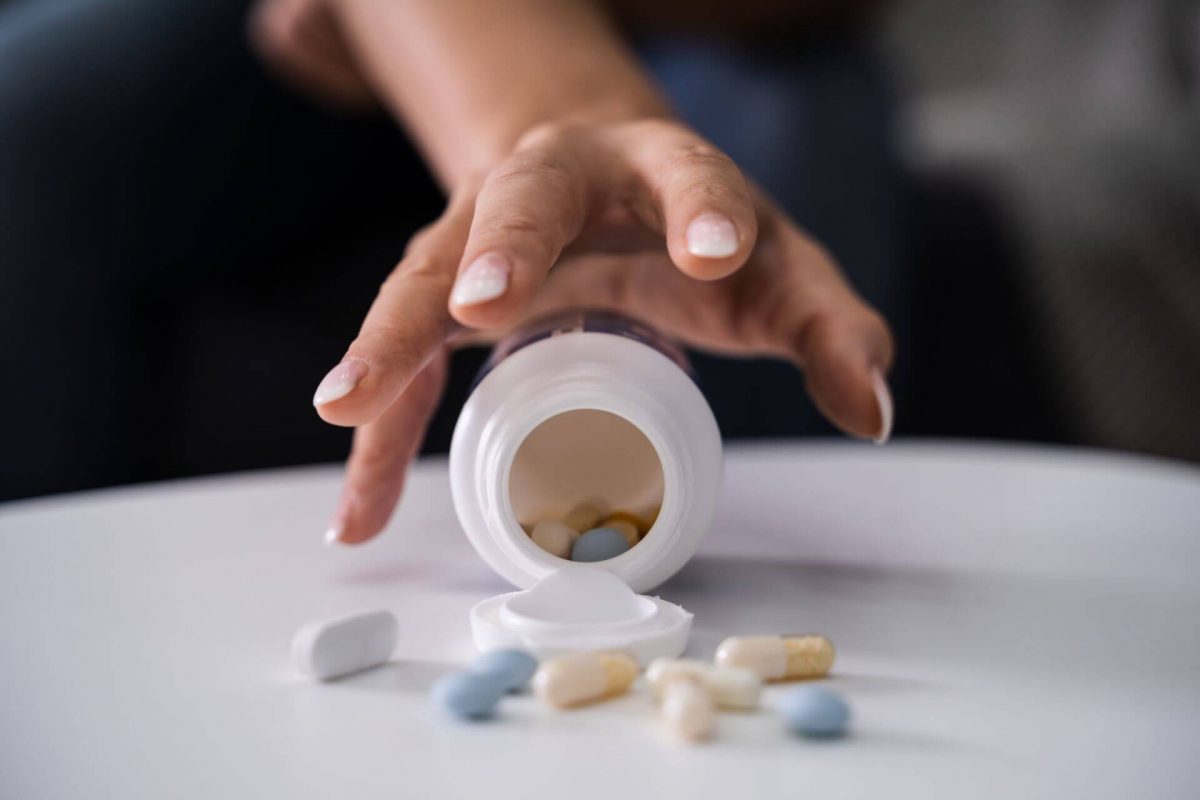Let’s be honest. Many of us still have a prejudiced idea of what an “addict looks like” or what type of background they come from. So it may come as a complete shock when your son or daughter is diagnosed with an active addiction. Your child came from a good home, had a happy childhood and everything else to set them up to be successful. What happened?
Addiction does not discriminate based on class, gender, race or lifestyle. It can affect people from all walks of life. To understand addiction, you need to understand the science behind it.
For this article, we draw on the expertise of Dr Nora Volkow, director of the National Institute on Drug Abuse (NIDA) in various articles she’s published.
WATCH: The science of addiction
What we know about addiction today
Thanks to science, we know a lot more about addiction than we did in previous generations. We know that addiction is a complex disease that changes how our brain works, and quitting requires more than good intentions or a strong will.
Thankfully, we also know that addiction is treatable. With modern-day therapy and the right care, people with severe drug addiction can look forward to lasting recovery.
How drug abuse changes how your brain works
Substances use disorder dramatically affects the reward centre in our brain, which is the part of the brain that motivates behaviour to seek out pleasure and rewards. Pleasure comes from delicious food, beautiful music, satisfying sex, and daily activities such as exercise, dancing, playing, and laughing in everyday life.
A chemical messenger called dopamine stimulates the reward centre in our brain. Dopamine is central to how addiction develops.
Firstly, what is dopamine?

Dopamine is a “feel-good hormone” because it’s associated with seeking out reward and pleasure. It’s also associated with learning, memory, motor system functions and more.
Dopamine is a neurotransmitter made in the brain and comprises tiny molecules that your nervous system uses to transmit messages between neurons or from neurons to muscles. Neurons are nerve cells that send and receive signals from your brain.
Dopamine is released naturally when your brain is expecting a reward. Your dopamine levels rise in anticipation of a particular activity that brings pleasure. It could be waiting to eat freshly-baked chocolate cake, buying a new pair of shoes or downing a cold beer on a hot day.
When you eat the cake, buy the shoes or down the beer, you experience a flood of dopamine that acts to reinforce this pleasurable moment, so you seek it out again to reward yourself. It’s a cycle of motivation, reward and reinforcement. At a fundamental level, the pleasure-and-reward system ensures we eat, drink and sleep etc., for survival and have sex for reproduction.
Why do we need dopamine?
Brains are wired to ensure we repeat life-sustaining activities by mentally connecting those activities with pleasure or reward.
Whenever this reward circuit is activated, the brain notes that it must remember something important. Our brain then conditions us to do the “pleasure thing” repeatedly without thinking about it. Dopamine is why we seek out food to eat, fire for warmth and sex to reproduce, among many other things.
How is dopamine linked to drug addiction?
Dopamine doesn’t create feelings of pleasure; it reinforces enjoyable sensations and behaviours by linking things that make you feel good with a desire to do them again.
That means certain sounds, smells, and sights can raise dopamine levels in anticipation of pleasure which, in turn, motivates us to seek out the pleasurable substance, behaviour or activity. The neurotransmitters that create feelings of happiness or euphoria are serotonin, endorphins and oxytocin.
The receptor downregulation process
Drugs affect our brain’s reward system by flooding it with excess dopamine. The huge and rapid dopamine surge is known as the “rush” because the intensity and duration of the pleasurable stimuli far exceeds natural brain chemistry. It’s certainly greater than what you’d experience from eating chocolate or buying a new pair of shoes.
A complex process occurs when our reward system is overstimulated, and it eventually makes us “blunt” to everyday stimuli. Drug-induced brain changes affect the prefrontal region, which controls higher functions like judgement, decision making and self-control over our actions.
What happens is our brain circuits adapt to the unnatural dopamine surges by shutting down receptors to de-sensitise the reward/motivation/reinforcing effect of the chemical messenger. This process is called receptor downregulation.

Courtesy National Institute on Drug Abuse, National Institute of Health
The vicious cycle of dopamine surges
The result is ordinary things in our life that are healthy and generally pleasurable are no longer enough to motivate us. We need a surge of dopamine to ‘feel okay’, and we seek out the drug to satisfy the craving. The vicious cycle continues, and the amount we usually take is not enough, so we increase it or use the drug more frequently to get the same effect.
The endless cycle of dopamine surges, and the brain’s attempt to adapt to high dopamine levels by downregulating receptors, ultimately lead to drug tolerance and then active addiction.
When drug abuse is “no longer a choice”
At this point, drug abuse has disrupted a fundamental part of our brain, and it’s permanently changed how our brain works naturally. It’s no longer a choice to take the drug. Instead, the distress of NOT taking the drug is too difficult to handle.
Our brain keeps readjusting to surges in dopamine when exposed to the drug, which reduces the high or rush we experience. This effect is known as tolerance. To achieve the same dopamine high, we have to take more of the drug more often. A fatal consequence of this would be an overdose.
Why too much dopamine turns into depressed blobs
Drugs that are the hardest to quit can release up to 10 times the dopamine that natural rewards produce. Dopamine surges from drugs like heroin and cocaine are instantaneous, the effect is far more intense and lasts longer than a natural reward.
For the brain, the difference between natural rewards and drug rewards is like the difference between whispering in someone’s ear and shouting through a megaphone.
If someone shouted in your ear with a megaphone, you would quickly shut down the volume. And this is what the brain does when it experiences a surge of dopamine from repeated exposure to drugs. It turns down the “volume of dopamine” by shutting down the number of receptors that can receive signals.
Fewer dopamine receptors negatively affects our natural pleasure-and-reward system. Eventually, the addiction disease makes you feel flat, listless, depressed and unable to enjoy even the most simple pleasures in life.
Why substance abusers will risk everything for a dopamine high

We lose our ability to control the compulsion to use a drug(s) because our brain changes with repeated use. A tolerance for the drug builds up, and we need more of the drug to get the same reward. We surrender to an irresistible urge to take the drug regardless of negative consequences. Even the threat of divorce, bankruptcy, jail or even death may not be enough to stop us from using or relapsing.
At this point, quitting drugs without a medical detox and a drug addiction treatment Program is not a realistic option. You can try, but the chances of relapsing will be high. It’s time to ask for help and get professional addiction care and treatment before it’s too late.
We’re here to help.
Contact us today if you’d like a confidential and free chat with one of our highly-trained addiction professionals at White River Manor in South Africa.







